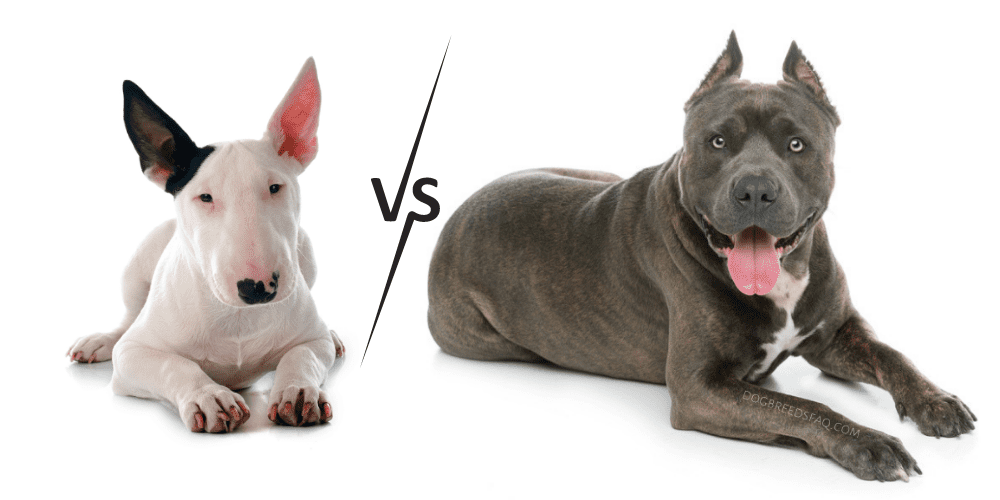We’ve got the English Bull Terrier in one corner, and in the other, the American Pitbull Terrier. Though there are many differences, they are erroneously lumped together with other breeds as the same type of dog.
With this in mind, we will take a closer look at the Bull Terrier and the Pitbull Terrier.
Bull Terrier vs Pitbull Appearance
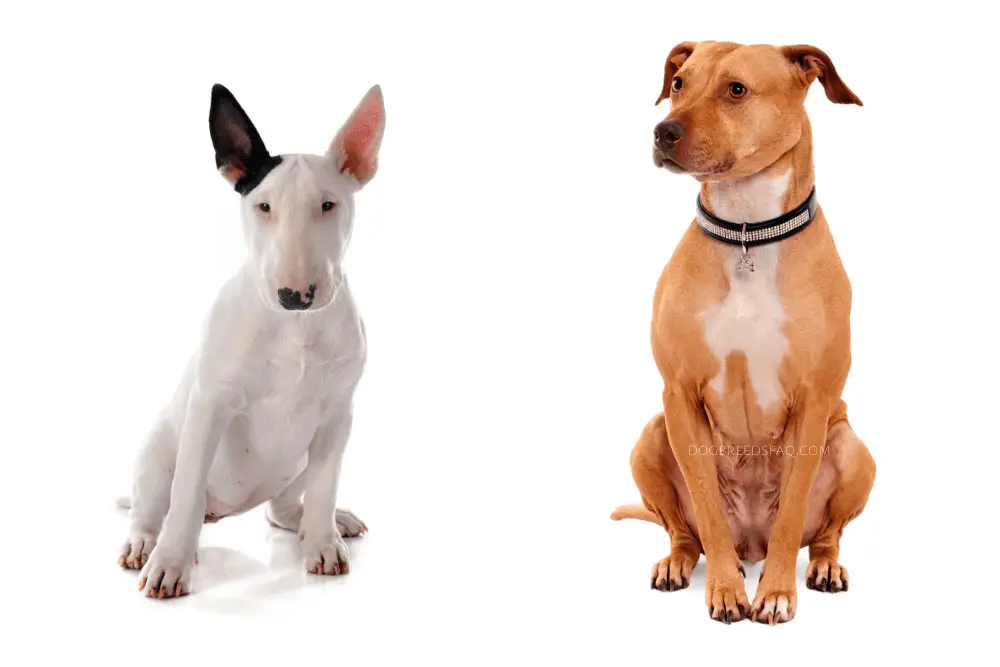
The appearance of these breeds of dogs can be summed up in a few words-
Strong jaws, short coats, compact yet thick skeletal structure, and a medium yet muscular build.
Though they are different breeds, all of the above paint each accurately. The main difference in appearance that would be noticed immediately, is within the face.
Bull Terriers have what the AKC describes as an “egg-shaped” head, giving them a particularly distinctive look. On average, they are a little bit taller than the Pitbull Terrier and are generally heavier and stalkier, and both are considered medium-sized dogs.
Coat Colors
 Bull Terrier’s most Common Colors are: Brindle and White, White and Black Brindle, White, Fawn and White, Red and White, and Tri-color
Bull Terrier’s most Common Colors are: Brindle and White, White and Black Brindle, White, Fawn and White, Red and White, and Tri-color
The Bull Terrier difference in colors traditionally stems from two major coat color classifications- White and Colored.
Since the early days of this breed’s existence, white was always the most desirable color for the breed, so much so that everything else was thrown into the other single classification of “colored.”
Though the different color variations have become more popular as the years tick by, this distinction is still practiced today. Dog show-winning Bull Terriers are most often completely white.
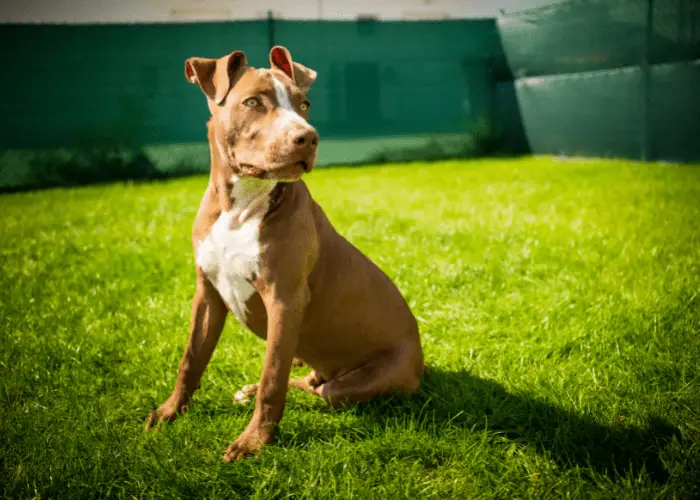
The most common APBT Colors are: Fawn, White, Brindle, Black Grey, Brown, Red, Blue, and Red
The American Pitbull Terrier can have up to 23 coat color variations, some rarer than others. Studies have shown that some colors of this breed can reflect physical conditions that may occur throughout the individual’s life.
For more about this study, click here.
Bull Terrier vs Pitbull Evolution
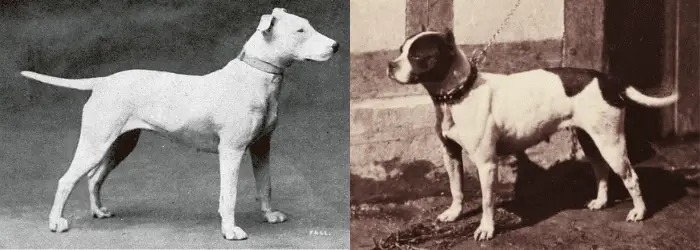
Initially, the Bull Terrier came into being an attempt to breed a dog fit for blood sports. The BT transformed into a fashionable companion dog as the UK began to shy away from cruel sport activities involving canines. (image source)
The Bull Terrier of old was not the same in appearance compared to the breed we have today. Their egg-shaped head was developed throughout the post-fighting years through selective breeding.
Today, there are two varieties of the Bull Terrier. There’s the Standard Bull Terrier (the focus of this article) and the Miniature Bull Terrier.
Mini Bull Terriers are small dogs (about 14″ tall) who share looks and similar temperaments to their larger cousins.
The Pit Bull Terrier shares a similar beginning to the Bull Terrier, even similar ancestry. However, key differences between the two have always been the breeding intent throughout the ladder 19th century, spanning into the early 20th century.
While Bull Terriers were shifted from fighting to family life in the UK, American Pit Bulls were still being bred for fighting, with breeders honing in on their willingness to engage and ability to cause and sustain the most damage.
Some Pitbull Terriers are used today to assist in rounding up and taking down feral pigs across the United States, making use of what’s left of their fighting prowess against a stronger, well-armed, and more powerful opponent.
Bull Terrier vs. Pitbull Terrier Size and Weight

The Bull Terrier weighs up to 27 kg and can stand around 53-56 cm at the shoulder.
Pitbull Terriers can weigh up to 30 kg and is generally about 43-53 cm at the shoulder.
Bull Terrier vs Pitbull Temperament
Bull Terrier Temperament
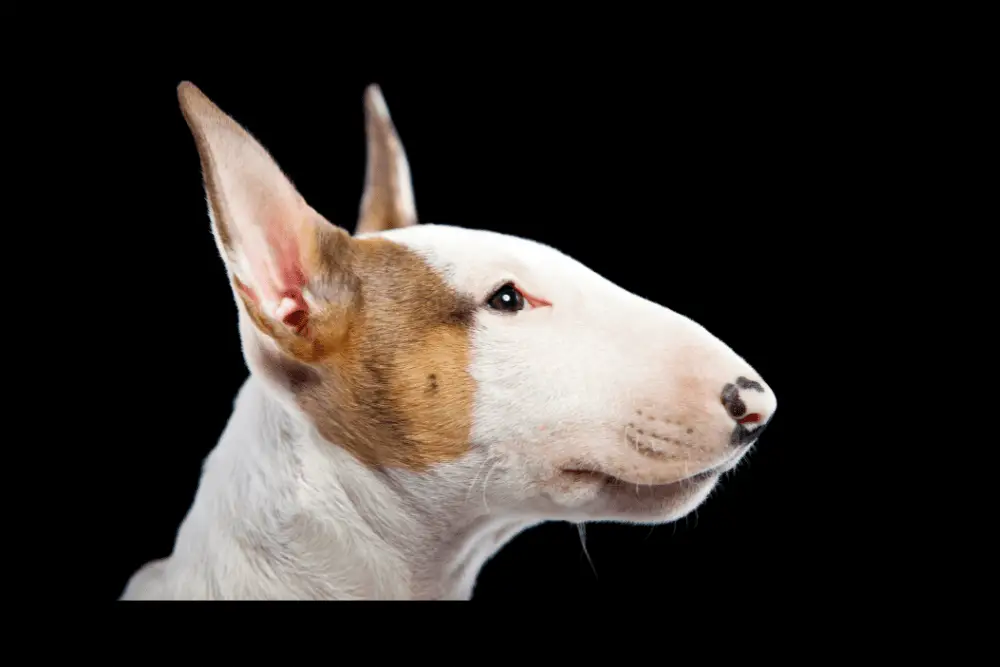
Affectionate – Active – Protective – Stubborn – Proactive – Clownish
Despite its violent beginnings, the Bull Terrier is a gentle, loving dog that loves to play with its owners and family members. They are loyal dogs to their owners and will often take the role of guardian of the household.
They can be trained to coexist with other pets, such as dogs or cats, but it isn’t advisable.
Bull Terriers can often harbor a strong prey drive that must be trained out of their system as early as possible. This breed is not recommended for families with other pets and must be socialized with other dogs early and often to avoid this drive from becoming a problem within a neighborhood.
Aside from this, they are considered solid family pets and loyal companions, being much gentler and more loving than their predecessors. That notwithstanding, these are powerful dogs who require dedicated training and frequent socialization.
Pitbull Terrier Temperament
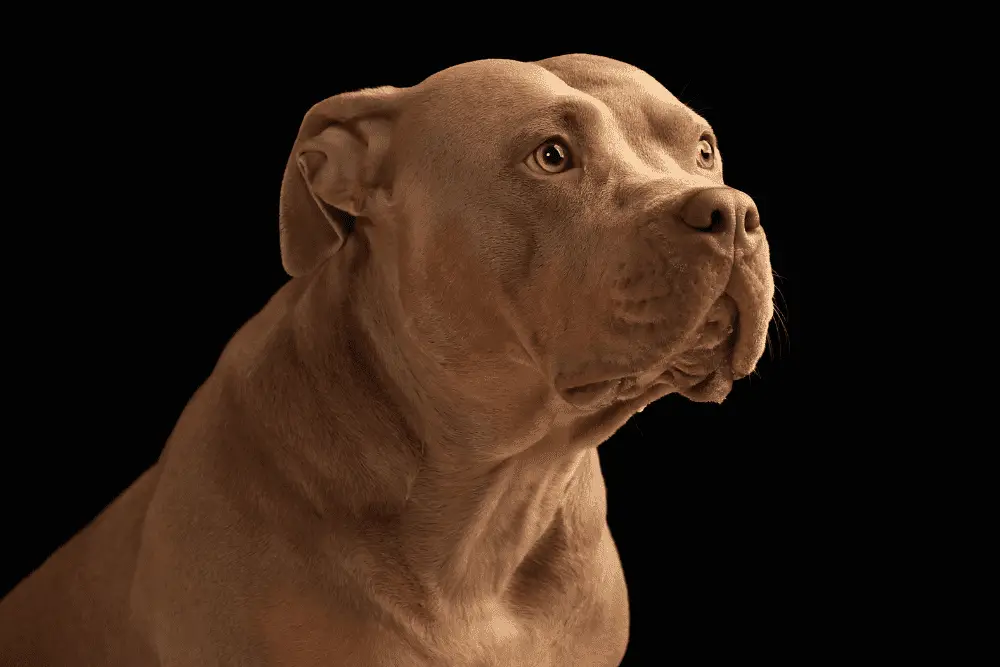
Clownish – Affectionate – Intelligent – Obedient – Loyal – Stubborn – Courageous
Something often goes unsaid when it comes to this breed dawning its monstrous reputation. The American Pitbull Terrier was a wildly popular family dog in the early to the mid-20th century. Their reputation was once the complete opposite of what we hear about the breed today.
Could it have been because they were closer to the mark in terms of recency of dogfighting and were better suited to train them properly? Who knows? But the breed’s capacity to captivate the hearts of its owners has been a staple in the history of the dog.
Considered a nanny dog, they are extremely protective over children within their families and show total devotion to their owners. They enjoy being the center of attention and are often noted for their silly disposition and willingness to entertain.
Because the APBT is so friendly-natured, they don’t have a good reputation for guard dogs. They’d rather make friends than enemies when it comes to people, which has coincidentally given them a foothold in the world of therapy dogs. On the other hand, they are willing to fight to the death if they perceive something to be a threat to their families, a perception that is often associated with other things on four legs.
This breed can become extremely aggressive toward other dogs without careful training and socialization. They will boldly and courageously throw themselves between a threat and its owners, which is also something that needs to be worked with through training.
Bull Terrier vs. Pitbull Terrier History
Some bad reputations are earned, while others are unfortunately inherited. Between these two, Bully breeds are a combination of both.
Fighting dogs wind up with a bad reputation regardless of the breed. At times they earn it due to their aggressive upbringing and pure attack instincts, but not all dog breeds keep these traits.
Since the end of dogfighting and bull-baiting, breeders have concentrated efforts to breed the aggression out of these breeds. The Bull Terrier is a breed that suffers from such a reputation, though it is no more likely to display aggressive behavior than any other breed.
The APBT, on the other hand, has earned its reputation over the years, at least more so than other breeds. Horror stories are abundant around this breed, including turning on its owners, attacking or killing other dogs, and having a massive problem with strangers.
However, their reputation as a vicious or unpredictably violent breed is overblown and is often due to a poor understanding of the dog’s training requirements by owners. The American Pitbull Terrier is no more aggressive than other breeds in many studies.
When they become aggressive, caution is thrown to the wind, and they are powerful enough to do a large amount of damage to their target. This is the big underlying difference between this and other breeds, like a Chihuahua.
In a study between 35 breeds concerning aggression, the Chihuahua ranked toward the top of the list (top meaning most aggressive), and the Pitbull Terrier ranked toward the lower end of the list (lower meaning the least aggressive of the 35 breeds). You can read up on this study performed by Dognition Here.
Bull Terrier vs Pitbull Training
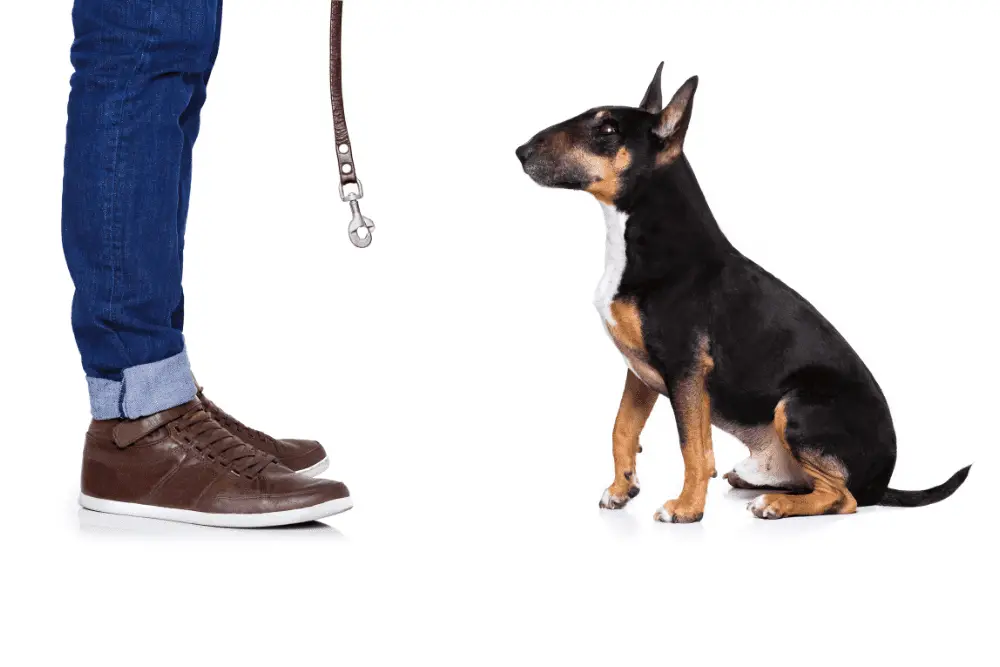
A very important thing to recognize about training any breed is to understand its characteristics, and this is abundantly true with any breeds that fall under the Pitbull category.
Bull Terriers and Pitbull Terriers require proper training starting from an early age, as should be done with any strong dogs. With such training, along with early socialization, you can flesh out the best traits and most beloved temperaments from either breed of dog and weed out all of the undesirable traits.
Starting from a young age is imperative with either of these breeds, be it socialization or simple house and behavioral training. The earlier it starts, the more success is achieved, and both breeds are intelligent enough to become modern-day working dogs.
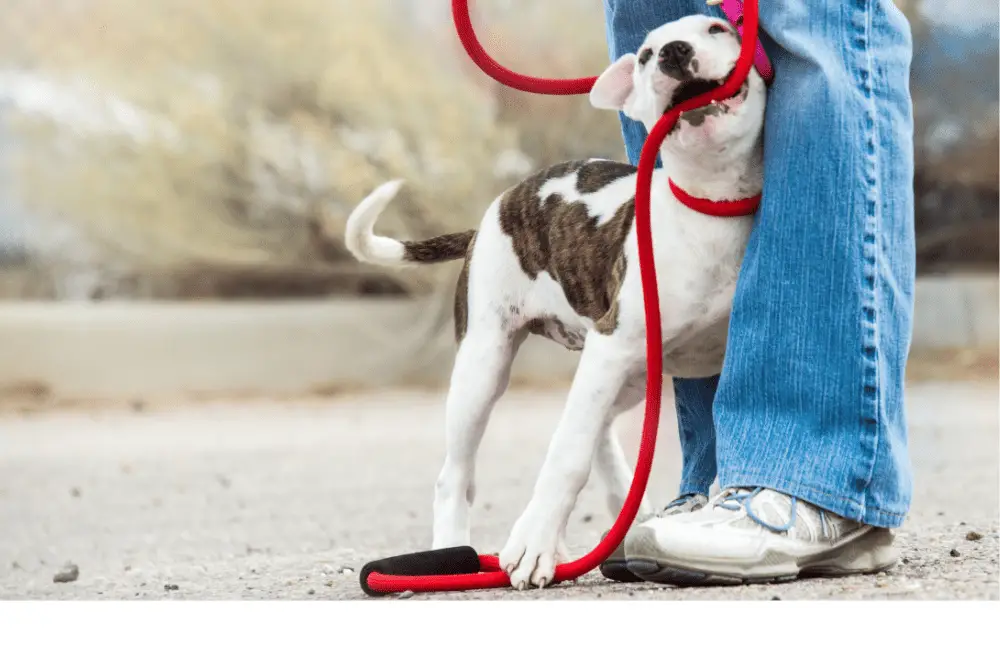
Failure to train these breeds properly can become a problem and may lead to a recipe for disaster down the road. The same is true for any breed, but not all breeds have the tools to get themselves into trouble like the APBT and the BT. For this reason, neither breed is recommended for first-time dog owners.
Both the Pitbull Terrier and the Bull Terrier are active breeds, and they share exercise needs that must be satisfied to avoid getting themselves into trouble.
It’s a good idea to dedicate plenty of time daily toward giving the dog some exercise and mental stimulation. Troubles happen by becoming aggressive, anxious, or bored, typical to many breeds with a sporting background.
A dog who’s properly engaged in the mental and physical stimulus is an overall better dog- mentally and physically. Successful training sessions reaps friendly dogs, and lack of training mixed with ignorance and lack of exercise can make for an aggressive breed.
Bull Terrier vs. Pitbull Life Expectancy
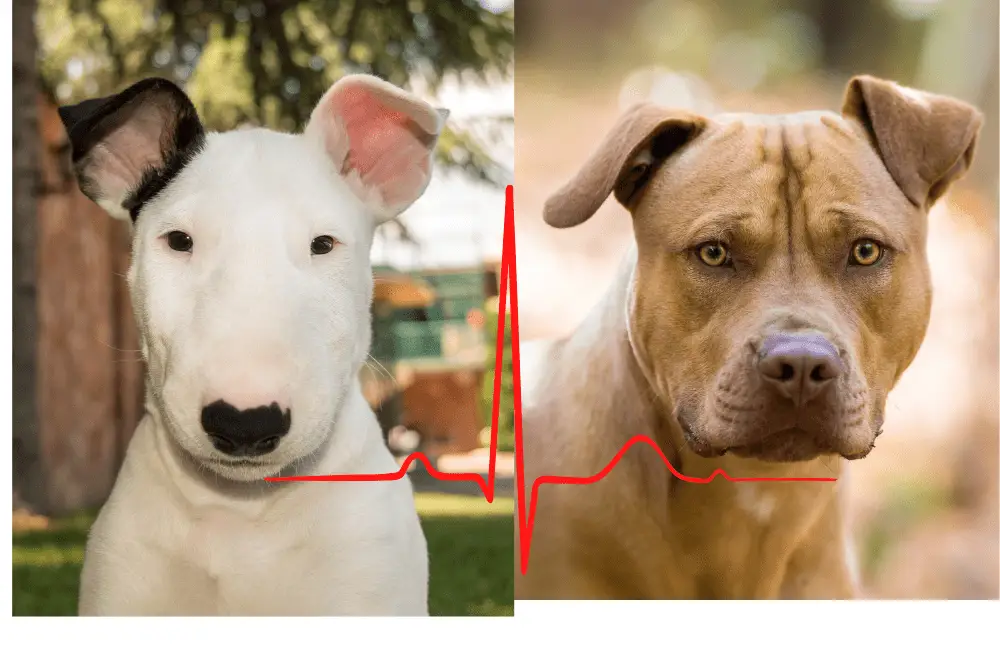
The average life expectancy of a Bull Terrier can span between 11-14 years. There are many factors involved to get the most out of the breed’s lifespan, such as proper care, diet, and freedom from genetic or hereditary complications throughout the dog’s life.
The average life expectancy of an American Pitbull Terrier ranges between 8-15 years. The 7-year gap in this average is mainly due to more hereditary concerns and a broader spectrum of other health problems that come inherent with the breed.
Bull Terrier vs. Pitbull Health Issues

All breeds can suffer from health issues, and all have hereditary or genetic risks, differing from breed to breed. Whether a breed is considered a “healthy breed” or not is true.
A healthy breed harbors its own set of issues, but simply less than other breeds- there is no such thing as a dog breed that is free from health concerns. Both of these breed types are viewed as healthy breeds, but the Bull Terrier is healthier between the two.
Health Concerns Related to Bull Terriers
- Heart Disease– When heart disease is found in a Bull Terrier, the culprit is commonly due to a problem with the heart valve.
- Deafness– Most commonly, deafness is from birth, rather than gradually losing their hearing over time.
- Luxating Patella is a condition that temporarily causes kneecaps to slip out of place.
- Dry eye– Most commonly found in white Bull Terriers. Tear ducts become incapable of keeping the eyes moist, resulting in infection and excessive itching.
- Kidney Problems– often in the form of this million-dollar word: Glomerulonephritis, which is inflammation of the tiny filters in the kidneys, causing them not to work properly or fail.
Health Concerns Related to Pitbull Terriers
- Hip Dysplasia-a condition where the femur (thigh bone) does not fit together with the pelvis as it should.
- Luxating Patella– As aforementioned, a temporary dislocation of the kneecaps.
- Degenerative Myelopathy– a slow and progressive weakening of the hind limbs due to the degradation of the spinal cord. Often results in paralyzation.
- Skin Allergies– Skin allergies (otherwise known as “atopy”) are common with this breed.
- Thyroid Defects– Common to this breed is hypothyroidism, which hampers thyroid hormone production.
Bull Terrier vs. Pitbull Terrier Bite Force
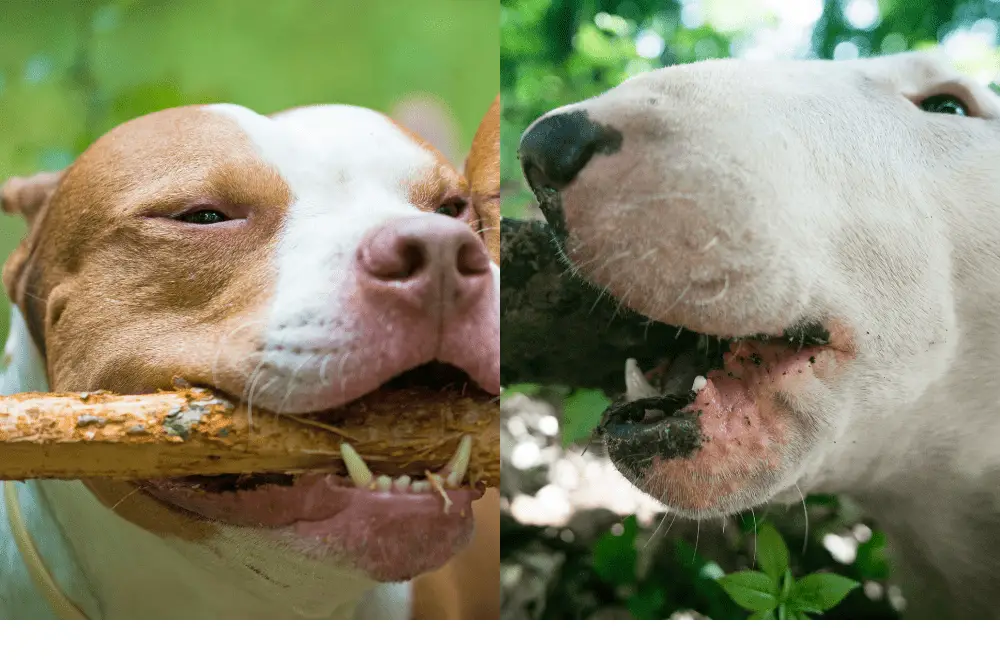
Neither of these breeds rank as high as their reputations suggests when it comes to bite force. They measure more on the average side of the scale than anything.
The bite force of a Bull Terrier is the stronger of the two, coming in at about 269 psi. Looking at the Roman Nose shape of the breed’s head, it’s little wonder why there’s more power to their bite.
However, the Pitbull Terrier isn’t too far behind, biting down at about 235 psi. Pitbull Terriers are among the bottom of the pound for pound bite force scale. For the sake of perspective, the strongest bite force in the world of dogs is about 743 psi enjoyed by the Kangal.
Is a Bull Terrier a Pitbull?
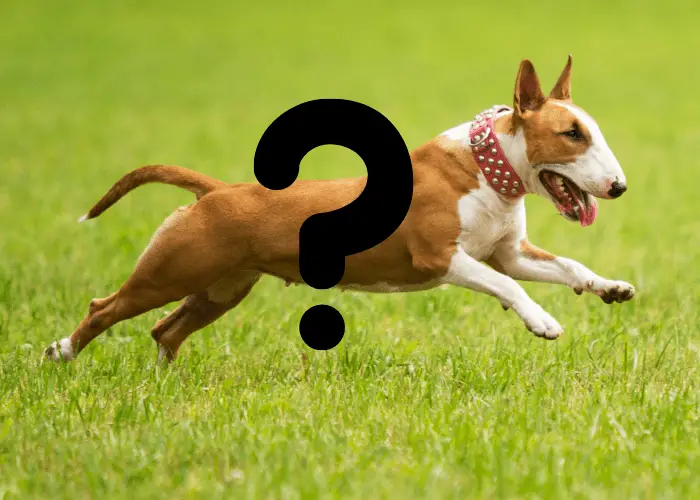
Any Pitbull breed stems from the practice of dogs who were bred to pit fighting- literally being thrown in a fighting pit with opponents, ranging from rats to other dogs.
Bull Terriers originated in England in the 19th century, and Pitbull Terriers originated within the United States (though descended from earlier renditions of Pitbulls from the UK). This distinction has caused a bit of an easier time in the reputation department for the Bull Terrier. That notwithstanding, they are indeed included under the “Pit Bull” general term.
A Pit Bull classification includes any breed that stemmed from the parentage of the Old English Bulldog breed mixed with the Old English Terrier (and later on with other terrier breeds) for tenacity and agility back in the 1800s.
Since dog fighting became illegal much earlier in the United Kingdom than in the United States, breeders shifted gears toward making a better overall pet in the UK, mixing it with dalmatians and other breeds of the terrier family.
In the meantime, breeders were still concentrating on their fighting characteristics in the US.
The difference in breeding practices created a divide within the Pit Bull category, granting a less vicious reputation for Bull Terriers and Staffordshire Bull Terriers but a more lethal reputation for American Staffordshire Terriers and American Pit Bull Terriers.
The same practices also sully the American Bulldog and American Bully reputations.
AKC Registration
The American Kennel Club does not recognize the American Pitbull Terrier. However, a very close relative to the APBT, the American Staffordshire Terrier (otherwise called Am Staff), has gained recognition by the AKC.
These two are nearly similar breeds with different names and are extremely difficult to identify- even by trained eyes correctly.
HOWEVER, the APBT is recognized and standardized by the United Kennel Club and the American Dog Breeders Association. These are two of the very few kennel clubs in the world that have made standards and registries for the breed.
Unlike the APBT, the Bull Terrier is recognized with a breed standard and available for registration by the AKC.
Final Thoughts
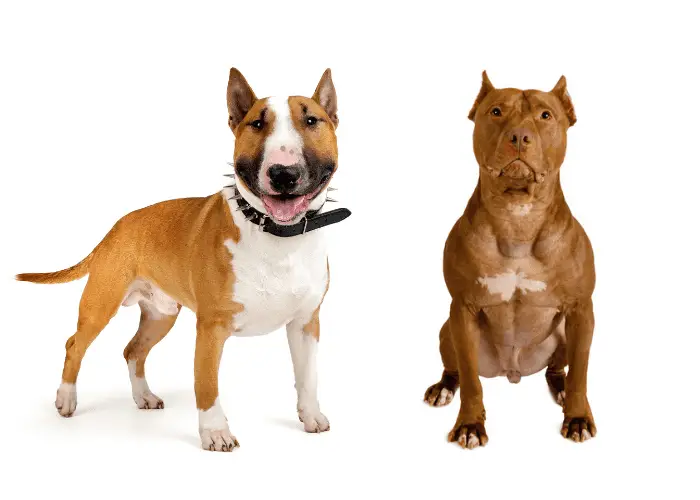
The best dog breed for your home will vary depending on what you want in a dog, your living and family situation, how much time you can spend with a dog, etc.
But when you enter into the arena of Pitbull dogs, regardless of which breed, first-time dog owners should look elsewhere.
Many people have made the mistake of taking in a Pitbull-type pup to regret it later on. This is why Pitbull categorized breeds populate kennels across the United States and many places around the world.
Understanding the differences between the breeds under the Pitbull generalization is key to a more informed decision for future dog owners.
American Bullies, Pitbull Terriers, American Staffordshire Terriers, Staffordshire Bull Terriers, American Bulldogs, and Bull Terriers fall under the “Pitbull breeds” category. However, they are all very separate breeds with different characteristics.
American Pitbulls have their stigma attached to them; that is, with any breeding success, going to become a thing of the past.
Reputable breeders have spent the past few decades to weed out the violent streak from these breeds, which labels them as dangerous dogs. It’s only a matter of time before they have a more chilled reputation, similar to what’s enjoyed by the British varieties.

